The 30 Best Places to Live in the Southwest U.S.: Complete Guide to Top Cities and Towns
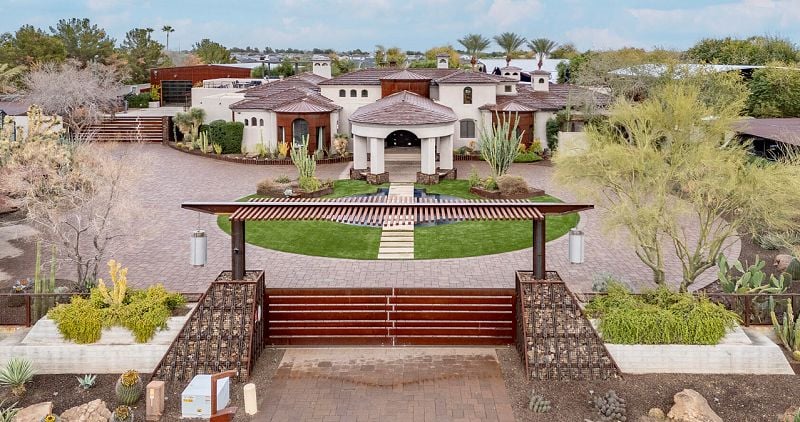
The Southwest United States offers a compelling combination of natural beauty, cultural richness, and economic opportunity that continues to attract new residents from across the country.
This diverse region spans Arizona, New Mexico, Nevada, Utah, Colorado, and Texas, featuring everything from desert landscapes to mountain communities.
The following cities represent the top destinations where residents can enjoy year-round sunshine, affordable living costs, and vibrant local communities.
From major metropolitan areas like Phoenix and Las Vegas to smaller cities such as Flagstaff and Taos, each location provides unique advantages for different lifestyles and preferences.
Understanding the key factors that make these Southwest communities attractive helps potential residents make informed decisions about their next home.
Here are the best places to live in the Southwest:
1. Phoenix, Arizona
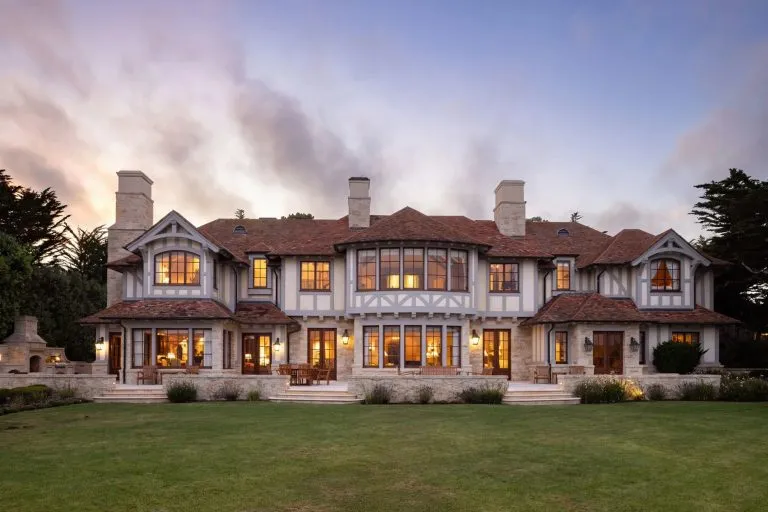
Phoenix stands as the fifth-largest city in the United States and serves as Arizona’s capital. The metropolitan area houses nearly 5 million residents across diverse neighborhoods and suburbs.
The city offers abundant sunshine year-round with over 300 days of clear skies annually. Winter temperatures typically range from 40-70°F, making it attractive for seasonal residents and retirees.
Paradise Valley and Litchfield Park rank among the top Phoenix suburbs for quality of life. Gilbert consistently receives recognition as one of the Southwest’s most livable communities.
Phoenix serves as a major airline hub with extensive flight options and competitive fares. The city provides easy access to outdoor recreation, including hiking trails in the surrounding Sonoran Desert.
Air quality challenges exist due to the city’s geographic location in a valley basin. Summer temperatures frequently exceed 110°F from June through August.
2. Gilbert, Arizona
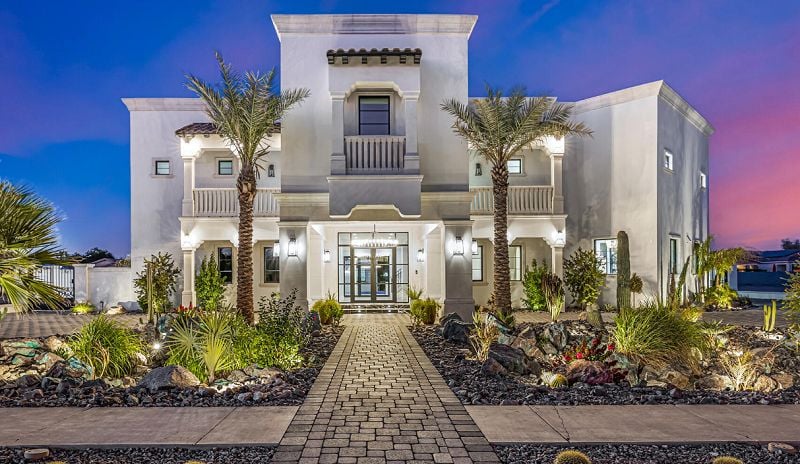
Gilbert stands out as one of Arizona’s most livable communities, consistently earning recognition as a top place to live in the United States. This Phoenix Metro city combines small-town charm with modern amenities.
The community spans across well-planned neighborhoods that cater to families, young professionals, and retirees. Power Ranch represents one of Gilbert’s premier areas, covering 1,414 acres with over 32,000 residents.
Gilbert offers abundant recreational opportunities including golf courses, fishing spots, and cycling trails. The city maintains numerous parks and scenic canal walkways for outdoor enthusiasts.
Residents benefit from Gilbert’s strategic location within the East Valley, providing access to employment centers while maintaining a family-friendly atmosphere. The area features a mix of housing options from affordable neighborhoods to upscale communities.
The city’s infrastructure supports both established families and newcomers seeking quality amenities in Arizona’s desert landscape.
3. Scottsdale, Arizona
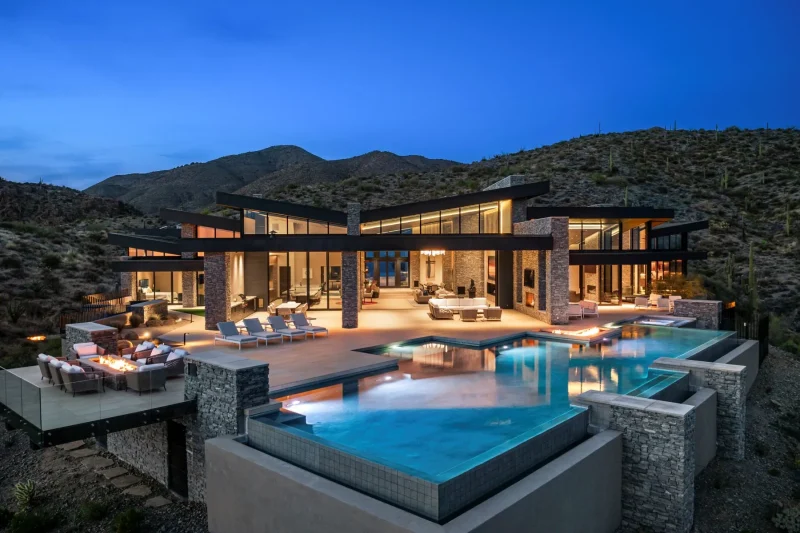
Scottsdale consistently ranks among Arizona’s finest cities for quality of life. The city offers luxury homes, breathtaking desert landscapes, and world-class amenities that attract residents nationwide.
The community features diverse neighborhoods catering to different lifestyles. McCormick Ranch spans 3,200 acres and provides family-friendly lakeside living with extensive recreational facilities.
DC Ranch stands out as an upscale master-planned community covering 4,000 acres. Residents enjoy townhomes, condos, and luxury homes alongside community centers, pools, tennis courts, and parks.
Old Town Scottsdale delivers vibrant urban living with easy access to dining, shopping, and entertainment venues. The area maintains a distinctive Southwestern character while offering modern conveniences.
Scottsdale earns recognition as “The World’s Finest Golf Destination” due to numerous award-winning courses and luxury resorts. The city prioritizes safety and maintains excellent schools, making it particularly attractive to families seeking desert living.
4. Tucson, Arizona
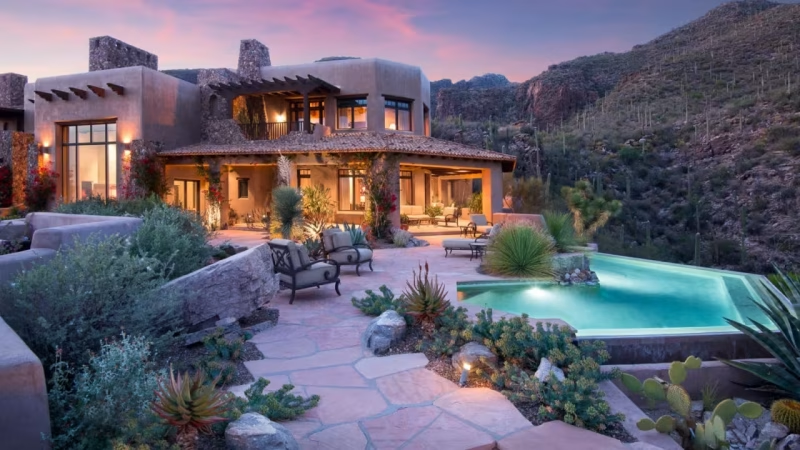
Tucson offers an exceptional combination of cultural richness and natural beauty in the Sonoran Desert. The city provides stunning mountain views and abundant sunshine year-round.
The cost of living remains relatively affordable compared to other major southwestern cities. Housing options range from historic neighborhoods to modern suburban developments.
Tucson’s job market includes healthcare, aerospace, and technology sectors. The University of Arizona contributes significantly to the local economy and cultural scene.
Outdoor enthusiasts enjoy hiking, camping, and exploring the desert landscapes. Saguaro National Park surrounds the city on both east and west sides.
The metropolitan area spans over 9,000 square miles with diverse neighborhoods. Southwest Tucson and surrounding suburbs like Tucson Estates offer different lifestyle options for residents.
Cultural attractions include museums, galleries, and a vibrant arts scene. The city maintains strong connections to its Mexican heritage through food, festivals, and architecture.
5. Albuquerque, New Mexico
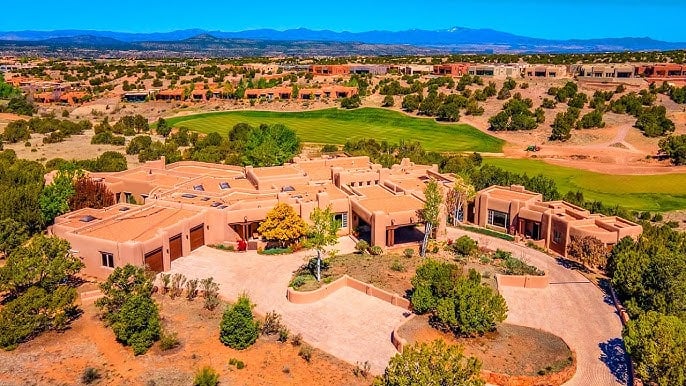
Albuquerque offers residents a unique blend of Southwestern culture and modern amenities. The city sits at 5,312 feet elevation in the high desert of central New Mexico.
The cost of living remains below the national average compared to other major cities. Housing prices provide affordability for both renters and buyers across various neighborhoods.
Albuquerque’s job market centers around technology, healthcare, and government sectors. Sandia National Laboratories and Intel maintain significant operations in the area.
The city features diverse neighborhoods with varying characteristics. Some areas offer family-friendly environments while others cater to young professionals.
Crime rates vary significantly between different neighborhoods and blocks. Residents benefit from researching specific areas before choosing where to live.
The region enjoys over 310 days of sunshine annually. Outdoor recreational opportunities include hiking in the Sandia Mountains and exploring nearby desert landscapes.
6. Santa Fe, New Mexico
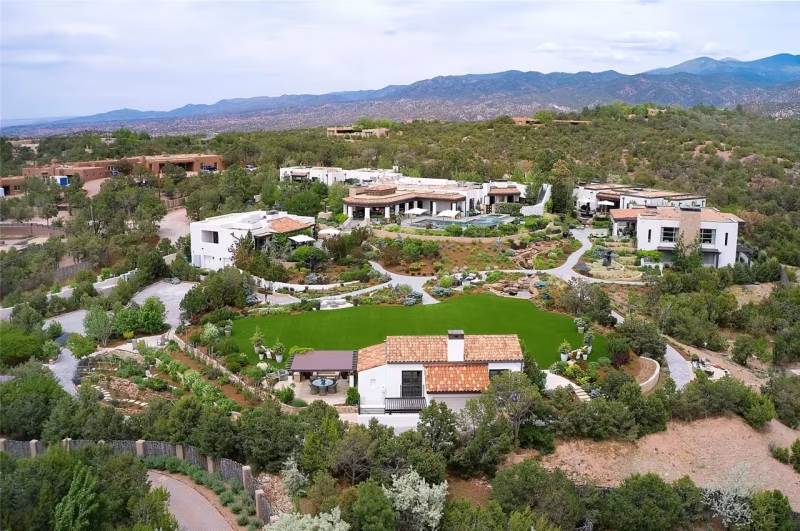
Santa Fe stands as New Mexico’s capital city, nestled within the Sangre de Cristo mountains at high desert elevation. The city combines rich cultural heritage with modern amenities.
Government and tourism drive the local economy. Many retirees choose Santa Fe for its climate and lifestyle offerings.
Housing costs exceed both state and national averages. The median home price significantly surpasses New Mexico’s average of $247,640.
The historic downtown Plaza anchors the city center. Mountain views provide scenic backdrops throughout many neighborhoods.
Outdoor recreation opportunities abound in the surrounding high desert and mountain terrain. The area attracts residents seeking active lifestyles.
Santa Fe offers top-tier amenities and a vibrant community atmosphere. Cultural attractions and arts scene contribute to the city’s appeal for diverse residents.
7. Las Cruces, New Mexico
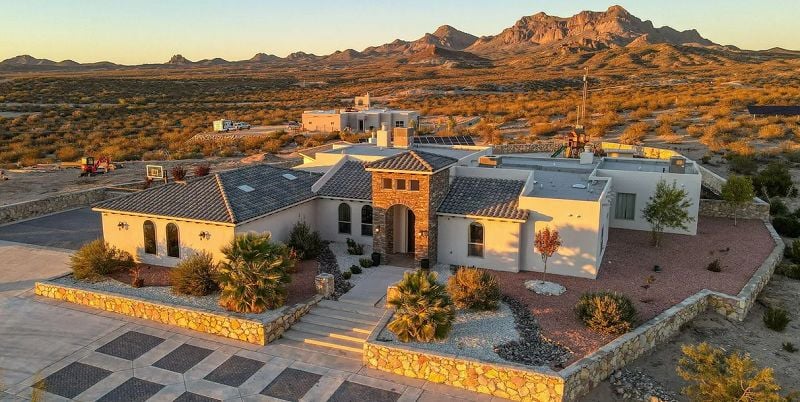
Las Cruces stands as New Mexico’s second-largest city, positioned in the southern region near the Mexico border. The city blends Native American, Spanish, and Mexican cultural influences into a distinctive southwestern experience.
Home prices in Las Cruces remain affordable compared to similar-sized cities nationwide. The median home value aligns closely with New Mexico’s state average of $247,640, making homeownership accessible for many residents.
The city offers diverse architectural styles beyond traditional Pueblo designs. Residents can choose from Adobe, Spanish Colonial, Southwestern, Modern, and Contemporary homes across various neighborhoods.
Las Cruces hosts numerous festivals celebrating salsa dancing, music, and cuisine alongside wine-focused events. The downtown area features a popular farmers market that doubles as a craft venue.
The Organ Mountains provide dramatic natural scenery and outdoor recreation opportunities. Las Cruces maintains a thriving arts scene that contributes to its cultural appeal for residents seeking creative communities.
8. Las Vegas, Nevada
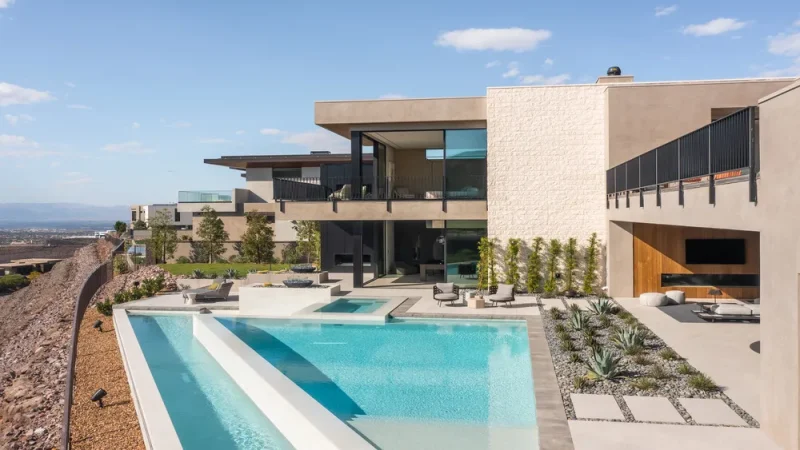
Las Vegas offers more than entertainment and nightlife. The city features diverse residential neighborhoods suited for different lifestyles and budgets.
Summerlin stands out as a master-planned community. It includes numerous parks, golf courses, and Downtown Summerlin’s outdoor shopping district. The area offers single-family homes and apartments.
Henderson provides a community-focused atmosphere. Many residents consider it one of the safest neighborhoods for families in Nevada.
The Lakes presents upscale living centered around man-made lakes. This neighborhood attracts those seeking luxury amenities.
North Las Vegas and Sunrise Manor offer more affordable housing options. These areas appeal to budget-conscious residents.
Downtown Las Vegas brings urban energy to daily life. Residents enjoy walkable streets and city amenities.
Each neighborhood provides distinct advantages based on residents’ preferences for luxury, community atmosphere, or urban living.
9. Henderson, Nevada
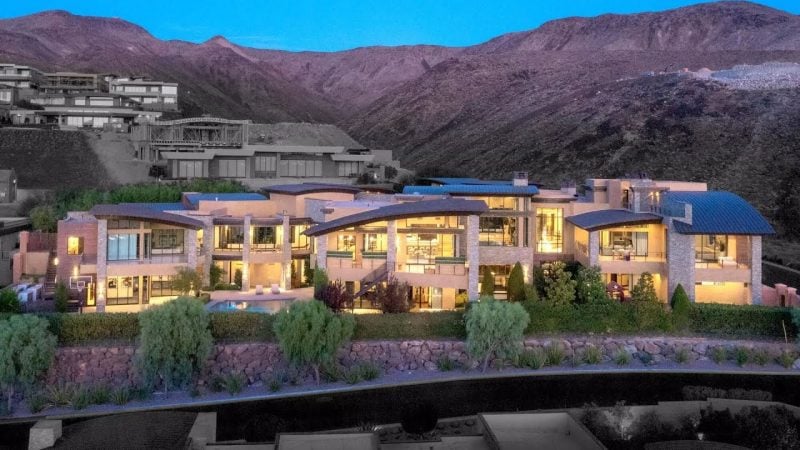
Henderson consistently ranks among the best places to live in the United States. The city offers high quality of life with excellent amenities for families, professionals, and retirees.
Green Valley Ranch stands out as a master-planned community with top-rated schools. The neighborhood provides convenient access to shopping and dining options.
MacDonald Highlands features upscale homes with stunning Las Vegas Strip views. This luxury community attracts residents seeking premium living experiences.
Anthem offers family-friendly environments with well-maintained amenities. The area appeals to households with children and active lifestyles.
Henderson’s location near Las Vegas provides urban conveniences while maintaining suburban comfort. The surrounding mountains offer hiking and outdoor recreation opportunities.
The city benefits from strong employment opportunities in healthcare and tourism. Excellent air service connects residents to destinations nationwide at reasonable prices.
10. Reno, Nevada
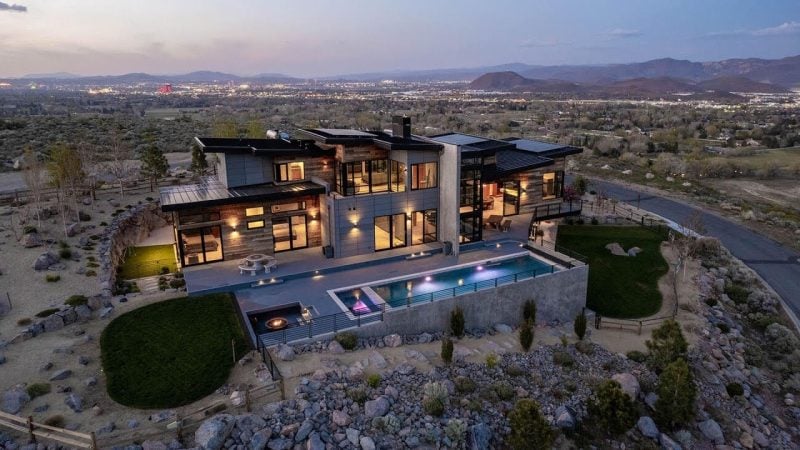
Reno sits nestled between the Sierra Nevada Mountains and Virginia Foothills, offering stunning natural beauty with urban conveniences. The city provides easy access to outdoor recreation and maintains proximity to Lake Tahoe.
Northwest Reno ranks as one of the safest neighborhoods in the area. The University of Nevada campus enhances educational opportunities for families.
Midtown Reno attracts residents seeking an artsy, vibrant atmosphere. The neighborhood blends cultural amenities with walkable streets and local businesses.
Housing costs remain more affordable compared to other western cities. Residents enjoy renowned festivals and year-round outdoor activities in the mountain setting.
The city combines big-city amenities with small-town charm. Multiple neighborhoods cater to different lifestyle preferences, from urban living to scenic retreats.
11. Salt Lake City, Utah
Salt Lake City stands as Utah’s capital and largest city, offering residents an exceptional combination of urban amenities and outdoor recreation. The city provides easy access to world-class skiing, hiking, and mountain activities in the nearby Wasatch Mountains.
The cost of living remains relatively affordable compared to other major western cities. Housing costs stay competitive while providing good value for buyers and renters.
Salt Lake City’s economy thrives with growing tech opportunities in the Silicon Slopes region. The job market continues expanding across multiple industries.
The city features a vibrant arts scene and friendly community atmosphere. Residents enjoy cultural attractions like Temple Square and numerous dining options throughout the metropolitan area.
Public transportation connects various neighborhoods efficiently. The Greater Avenues area ranks among the top neighborhoods for walkability and amenities.
12. St. George, Utah
St. George offers residents stunning red rock scenery and access to popular national parks. The city maintains low crime rates and experiences moderate winters with minimal snowfall.
The median home price sits at $485,000, which is 30.3% higher than the national average. Despite higher housing costs, the area attracts families and retirees seeking natural beauty.
Washington Fields and Green Valley provide family-friendly neighborhoods with suburban atmospheres. Santa Clara, Ivins, and Washington serve as nearby communities that offer additional housing options.
The region delivers exceptional outdoor recreation opportunities. Snow Canyon State Park provides hiking and scenic drives within minutes of residential areas.
St. George’s location makes it particularly appealing to retirees and outdoor enthusiasts. The city combines small-town charm with access to major Southwest attractions and national parks.
13. Provo, Utah
Provo sits in north-central Utah at the southern end of the greater Salt Lake City area. This college town offers residents a safe community with mountain views and valley vistas.
The city features several desirable neighborhoods. Grandview provides family-friendly living with scenic mountain and valley views. Edgemont offers quiet residential streets with larger homes and outdoor recreation access.
Downtown Provo combines urban amenities with historic and modern housing options. Oak Hills presents upscale living with beautiful homes and mountain scenery. Riverwoods delivers modern development near shopping and dining.
Provo’s location provides easy access to Utah’s outdoor recreation opportunities. The city maintains lower crime rates compared to many urban areas. Residents enjoy amenities and activities suitable for all age groups.
The housing market varies significantly across different neighborhoods within Provo. Home values reflect the desirability of specific areas throughout the city.
14. Mesa, Arizona
Mesa ranks as Arizona’s third-largest city and offers residents affordable living with desert beauty. The city sits in the Phoenix metropolitan area, providing access to major employment centers while maintaining lower housing costs.
Red Mountain Ranch stands out as one of Mesa’s premier neighborhoods. This master-planned community features golf courses and mountain views that attract families and retirees alike.
Eastmark represents Mesa’s newest development with modern amenities and planned infrastructure. The neighborhood emphasizes walkability and community spaces designed for active lifestyles.
Dobson Ranch offers established neighborhoods with mature landscaping and recreational facilities. Residents enjoy access to lakes, golf courses, and community centers throughout this well-developed area.
Mesa’s location provides easy access to outdoor recreation in the Sonoran Desert. The city maintains numerous parks, hiking trails, and sports facilities for year-round activities.
15. Chandler, Arizona
Chandler ranks among America’s top places to live according to Money Magazine and Forbes. The city combines economic opportunity with family amenities in a desert setting.
Located in the Phoenix Metro Area, Chandler offers easy highway access and reasonable commutes. The proximity to Phoenix Sky Harbor Airport benefits frequent travelers.
The city maintains a 90% high school graduation rate and provides excellent educational opportunities. Top-notch healthcare facilities serve residents throughout the area.
Chandler’s walkable downtown features dining establishments, breweries, and local shops. Public art installations add character to the urban core.
The tech industry drives much of Chandler’s job market. Multiple sectors provide diverse employment opportunities for professionals.
Popular destinations include Chandler Fashion Center and Tumbleweed Park. Veterans Oasis Park offers outdoor recreation in the desert landscape.
16. Orem, Utah
Orem ranks sixth among Utah’s best places to live, with a population of 96,043 residents. The city offers an average commute time of just 16 minutes.
Housing costs remain moderate with a median home value of $504,711 and monthly rent averaging $1,223. This affordability attracts families and young professionals to the area.
The city maintains exceptionally low crime rates, establishing itself as one of Utah’s safest communities. Families particularly value this security when choosing neighborhoods.
Orem sits between the Wasatch Mountain Range and Utah Lake, providing stunning natural scenery. The location offers abundant green spaces and outdoor recreational opportunities.
The community features friendly neighbors and a welcoming atmosphere that appeals to newcomers. Short commutes and quality amenities contribute to the city’s reputation for comfortable living.
17. Durango, Colorado
Durango sits at the foot of the San Juan Mountains in southwest Colorado. This mountain town combines outdoor recreation with historic charm and a vibrant downtown district.
The city offers diverse housing options across different neighborhoods. Residents can choose from peaceful areas surrounded by nature or more active downtown locations near restaurants and shops.
Durango provides year-round outdoor activities including hiking, skiing, and fishing. The town maintains easy access to trails and recreational areas throughout the region.
The community features a close-knit atmosphere while supporting local businesses and cultural attractions. Historic sites add character to the area’s appeal.
Durango ranks among Colorado’s desirable mountain communities. The town attracts residents seeking both adventure and small-town living in a scenic setting.
18. Flagstaff, Arizona
Flagstaff offers mountain living with four distinct seasons at 7,000 feet elevation. The city serves as home to Northern Arizona University and maintains a vibrant college town atmosphere.
Residents enjoy easy access to outdoor recreation including skiing, hiking, and mountain biking. The nearby San Francisco Peaks provide excellent winter sports opportunities.
The cost of living sits 14% higher than the national average. However, diverse housing options accommodate various budgets and lifestyle preferences.
Downtown Flagstaff features historic charm with local restaurants, breweries, and shops. The area maintains walkability and community character.
Major attractions include Lowell Observatory and proximity to the Grand Canyon. Walnut Canyon National Monument offers additional outdoor exploration opportunities.
The city experiences true mountain weather with snow in winter and mild summers. This climate appeals to those seeking relief from desert heat.
Flagstaff combines outdoor adventure with cultural amenities and educational opportunities.
19. El Paso, Texas
El Paso sits along the Rio Grande River at the intersection of Texas, New Mexico, and Mexico. The city ranks as Texas’s sixth-largest municipality and attracts residents with its affordable cost of living.
The desert landscape provides stunning mountain views and abundant outdoor recreation opportunities. Residents enjoy warm weather year-round with over 300 days of sunshine annually.
El Paso’s cultural diversity stems from its border location, creating a unique blend of American and Mexican influences. The city offers authentic cuisine, festivals, and cultural experiences.
Housing costs remain significantly below national averages. Many neighborhoods provide good value for families and young professionals seeking affordable homeownership options.
The job market includes opportunities in healthcare, education, military, and cross-border trade. Fort Bliss serves as a major economic driver for the region.
Crime rates vary by neighborhood, with several areas offering safe family-friendly environments. The city continues developing infrastructure and amenities to support population growth.
20. Carlsbad, New Mexico
Carlsbad sits in southeastern New Mexico, offering residents access to stunning natural landscapes. The city serves as home to Carlsbad Caverns National Park, which features over 100 limestone caves with unique formations.
Housing costs in Carlsbad remain below the state average of $247,640. The real estate market attracts investors with properties ranging from 2-bedroom homes to larger 3-4 bedroom options.
The area features distinctive desert terrain dotted with cacti and limestone cliffs. This landscape draws nature enthusiasts from across the country who come to explore the underground cave systems.
Carlsbad provides residents with a lower cost of living compared to many southwestern cities. The combination of affordable housing and proximity to natural attractions makes it appealing to those seeking outdoor recreation opportunities.
The city’s location in New Mexico’s oil-rich Permian Basin provides economic stability through energy sector employment.
21. Farmington, New Mexico
Farmington sits in northwest New Mexico with a population of 46,339 residents. The city serves as a hub for the Four Corners region and offers access to outdoor recreation opportunities.
Home prices in Farmington remain below New Mexico’s state average of $247,640. Most residents own their homes in this sparse suburban community.
The Foothills Drive Area features newer homes with scenic landscape views. Hood Mesa Trail offers spacious lots and custom-built properties.
Northeast Farmington combines established neighborhoods with newer developments. Sunrise Parkway attracts families with its proximity to parks and community amenities.
The local economy centers on oil industry operations and government employment. Public schools in the area perform above average compared to state standards.
Farmington provides a conservative-leaning community atmosphere that appeals to families and young professionals. The historic downtown area adds cultural character to this high desert location.
22. Cedar City, Utah
Cedar City sits in southwestern Utah as a gateway to multiple national parks. The city combines affordability with cultural offerings that attract residents seeking both outdoor recreation and arts programming.
Founded by Mormon settlers in the mid-19th century, Cedar City has evolved into a regional cultural hub. The community hosts numerous festivals throughout the year, earning recognition for its active arts scene.
Residents enjoy access to nearby natural attractions including Zion and Bryce Canyon National Parks. The surrounding red rock landscapes provide hiking, camping, and outdoor recreation opportunities year-round.
The city maintains lower living costs compared to other Utah communities while offering amenities typically found in larger metropolitan areas. Cedar City provides a small-town atmosphere with university resources from Southern Utah University.
Housing remains relatively affordable, making it accessible for families and retirees. The community balances growth with preservation of its historical character and natural surroundings.
23. Boulder City, Nevada
Boulder City stands as one of Nevada’s most desirable small communities. Located just 26 miles southeast of Las Vegas in Clark County, this historic city combines small-town charm with modern conveniences.
The city consistently ranks among the best places to live in Nevada. Residents enjoy lower crime rates and high quality of life compared to many urban areas.
Boulder City offers proximity to Lake Mead and outdoor recreation opportunities. The community maintains its historic character while providing essential amenities for families and retirees.
Housing options vary significantly across different neighborhoods. The local real estate market reflects the city’s desirability, with established residential areas commanding premium prices.
The city attracts residents seeking a quieter lifestyle within commuting distance of Las Vegas employment centers. Boulder City’s community-focused atmosphere appeals to those prioritizing neighborhood connections and civic engagement.
24. Kingman, Arizona
Kingman sits in the Mojave Desert along historic Route 66, offering residents an authentic Southwest experience. The city combines small-town charm with access to outdoor recreation and modern amenities.
Housing remains affordable compared to many Southwest destinations. Average home values hover around $265,000, making homeownership accessible for families and individuals seeking desert living.
The location provides easy access to outdoor activities throughout the Mojave Desert. Residents enjoy hiking, camping, and exploring the surrounding natural landscapes.
Kingman features various restaurants, shopping centers, and entertainment venues that serve the local community. The city maintains its Route 66 heritage while providing contemporary services and amenities.
The cost of living stays below national averages, attracting those seeking affordable Southwest living. This combination of low costs and desert lifestyle appeals to retirees and families alike.
25. Prescott, Arizona
Prescott sits nestled in the Bradshaw Mountains of Central Arizona with a population of approximately 43,000 residents. The city earns recognition as “Everybody’s Hometown” for its welcoming community atmosphere.
The area features a mild four-season climate that attracts residents seeking comfortable year-round weather. Mountain views and outdoor recreational opportunities define the local lifestyle.
Downtown Prescott blends historic charm with modern amenities, creating a walkable urban environment. The area offers dining, shopping, and cultural attractions within a compact district.
Prescott Lakes provides a master-planned community option with golf courses and lake access. The development appeals to residents prioritizing recreational amenities and mountain scenery.
The city consistently ranks among Arizona’s top places to live according to quality of life measures. Economic opportunities include growing job markets that have earned national recognition for vitality and creation rates.
26. Casa Grande, Arizona
Casa Grande offers residents affordable living in Arizona’s Sonoran Desert. The city maintains home prices below the state average of $382,092.
This Phoenix suburb houses 57,590 people in Pinal County. Most residents own their homes and enjoy a sparse suburban atmosphere.
The community attracts families and retirees with moderate political views. Mission Royale provides active adult living with golf amenities.
Villago serves families with lakes and parks in a master-planned setting. Rancho El Dorado offers diverse housing styles and community features.
Downtown Casa Grande delivers urban convenience with historic character. The area features various restaurants and shops for residents.
Casa Grande Ruins National Monument showcases Pueblo Indian history nearby. The location provides easy access to Phoenix while maintaining desert charm.
27. Green Valley, Arizona
Green Valley is a desert community in Pima County with a population of 21,581. The town offers residents a sparse suburban feel where most people own their homes.
This retirement-friendly community sits close to Tucson, providing access to urban amenities without city living. Residents enjoy year-round sunny weather and a tranquil lifestyle.
The town features numerous parks and recreation areas for outdoor activities. Shopping centers and restaurants provide convenient local amenities for daily needs.
Green Valley’s home prices are below Arizona’s state average of $382,092. The area offers high employment opportunities and above-average public schools.
Many retirees choose Green Valley for its peaceful atmosphere and proximity to major city services. The community tends to lean conservative politically and attracts those seeking a quieter desert lifestyle.
28. Sun City, Arizona
Sun City stands out as one of the original retirement communities in America. The city houses approximately 40,000 residents in a compact, well-planned environment.
Home prices remain below Arizona’s state average of $382,092. Property taxes stay low, making it an affordable option for retirees and active adults.
The community caters specifically to residents aged 55 and older. Over 10 golf courses dot the landscape, earning Sun City recognition as a golfer’s paradise.
Well-maintained neighborhoods create a peaceful atmosphere. The city offers social activities and amenities designed for active older adults.
Sun City’s location provides convenient access to Phoenix and other Southwest destinations. Many consider it the “Gateway to Southwest America” due to its strategic positioning.
The community maintains high standards for neighborhood upkeep and resident services. Year-round sunshine and mountain views enhance the living experience for those seeking an active retirement lifestyle.
29. Taos, New Mexico
Taos sits in northern New Mexico’s high desert, offering residents a unique blend of cultural heritage and artistic atmosphere. The town maintains a population of approximately 6,500 people.
The area features one of the oldest continuously inhabited communities in the United States, the Taos Pueblo. This Native American settlement adds significant historical depth to the region.
Most residents own their homes in this sparse suburban environment. The community attracts both young professionals and retirees seeking an alternative lifestyle.
Taos provides access to outdoor recreation opportunities in a scenic mountain setting. The surrounding landscape offers hiking, skiing, and other activities throughout the year.
The town’s artistic spirit influences local culture and daily life. Galleries, studios, and creative businesses contribute to the community’s distinctive character.
Real estate options vary across different neighborhoods within Taos County. Residents can customize their living situation based on preferences for cost, amenities, and proximity to town center.
30. Santa Clara, Utah
Santa Clara offers residents a peaceful small-town atmosphere with a population of approximately 5,500 people. The community sits in Southern Utah’s scenic landscape, providing access to natural beauty and outdoor recreation.
The downtown area features local attractions like Frei’s Fruit Stand, contributing to the neighborhood’s charm. Housing values vary significantly across different areas of the city, reflecting diverse neighborhood quality.
Residents enjoy lower crime rates and a quiet living environment. The location provides easy access to Southern Utah’s recreational opportunities while maintaining a close-knit community feel.
Santa Clara appeals to those seeking a slower pace of life in a natural setting. The small population creates opportunities for community involvement and neighborly connections that larger cities often lack.
Factors That Make the Southwest U.S. Attractive
The Southwest region offers year-round sunshine, affordable living costs, rich multicultural heritage, and unmatched access to outdoor adventures. These elements combine to create one of America’s most appealing destinations for residents seeking quality of life.
Climate and Weather Highlights
The Southwest region experiences over 300 sunny days annually in most areas. Phoenix averages 299 days of sunshine per year, while Albuquerque sees 310 clear days.
Summer temperatures range from 85°F to 115°F across the region. Desert areas like Phoenix and Las Vegas experience the highest heat, while elevated cities like Santa Fe and Flagstaff remain cooler.
Winter temperatures typically stay between 40°F and 70°F. Snow is rare in lower elevations but common in mountain areas above 5,000 feet.
Low humidity levels characterize the entire region. Most Southwest cities maintain humidity below 30% year-round, making hot temperatures more tolerable than humid climates.
The region receives minimal rainfall, averaging 8-15 inches annually. This creates consistent weather patterns with few surprises or extreme storms.
Cost of Living Overview
Housing costs vary significantly across Southwest markets. Texas cities like El Paso and San Antonio offer median home prices around $200,000-$250,000.
Nevada and Arizona present mixed affordability. Las Vegas median home prices reach $400,000, while smaller cities like Tucson average $280,000.
Utilities costs remain lower than national averages due to abundant energy resources. Natural gas and solar power keep electricity bills manageable despite heavy air conditioning use.
State tax structures favor residents in several Southwest states:
- Nevada: No state income tax
- Texas: No state income tax
- Arizona: Moderate income tax rates (2.6%-4.5%)
- New Mexico: Higher income tax (1.7%-5.9%)
Food and transportation costs typically run 5-10% below national averages. Gas prices fluctuate but generally stay competitive due to regional oil production.
Cultural Diversity and Local Traditions
Hispanic and Latino populations comprise 30-50% of most Southwest communities. This creates authentic Mexican restaurants, festivals, and cultural events throughout the region.
Native American heritage remains prominent across Arizona, New Mexico, and Utah. Tribal nations operate cultural centers, casinos, and art markets that enrich local communities.
Western and cowboy traditions persist in many areas. Rodeos, country music venues, and ranch-style architecture define the regional character.
Art scenes thrive in cities like Santa Fe, Austin, and Phoenix. Southwestern art styles featuring desert landscapes and Native American influences attract collectors and tourists.
Food culture blends Mexican, Native American, and Western influences. Green chile, barbacoa, and Tex-Mex cuisines originated in this region.
Music traditions include mariachi, country, and contemporary genres. Austin’s live music scene and New Mexico’s folk traditions exemplify the region’s musical diversity.
Outdoor Recreation Opportunities
National parks concentrate heavily in the Southwest region. Utah alone contains five national parks: Zion, Bryce Canyon, Arches, Canyonlands, and Capitol Reef.
Arizona offers Grand Canyon National Park and Saguaro National Park. New Mexico features Carlsbad Caverns and White Sands National Park.
Hiking opportunities exist year-round due to mild winters. Popular trail systems include Sedona’s red rocks, Santa Fe’s mountain paths, and Phoenix’s desert preserves.
Water recreation centers around major lakes and rivers. Lake Powell, Lake Mead, and the Colorado River provide boating, fishing, and swimming opportunities.
Winter sports thrive in mountainous areas. Colorado’s ski resorts, Utah’s powder snow, and New Mexico’s smaller mountains attract winter enthusiasts.
Golf courses operate throughout the year in desert climates. Scottsdale alone hosts over 200 golf courses, while Las Vegas offers championship-level facilities.
Rock climbing and mountain biking trails crisscross the region’s diverse terrain.
Settling in the Southwest: What to Consider
Moving to the Southwest requires careful evaluation of employment opportunities, healthcare infrastructure, and transportation networks. These factors significantly impact quality of life and long-term satisfaction in the region.
Jobs and Economic Outlook
The Southwest economy centers on technology, healthcare, aerospace, and energy sectors. Phoenix and Austin lead in tech job growth, while cities like Houston dominate energy markets.
Major Employment Hubs:
- Phoenix: Technology, manufacturing, healthcare
- Austin: Tech startups, government, education
- Denver: Aerospace, energy, telecommunications
- Las Vegas: Tourism, entertainment, logistics
Unemployment rates in Southwest metros typically range from 3-6%, with tech-focused cities showing stronger job creation. Remote work opportunities have expanded significantly, making smaller cities like Santa Fe and Tucson more attractive to professionals.
Healthcare and education sectors provide stable employment across the region. Military installations in cities like San Antonio and Colorado Springs create additional job markets.
Cost of living varies dramatically between cities. Austin and Denver command higher salaries but have increased housing costs. Smaller markets like Albuquerque offer lower wages but significantly reduced living expenses.
Healthcare Access
Healthcare quality varies significantly across Southwest cities. Major metropolitan areas offer comprehensive medical facilities, while rural regions face provider shortages.
Top Healthcare Markets:
- Phoenix and Scottsdale feature nationally ranked hospitals
- Denver provides extensive specialist care networks
- Austin has growing medical research facilities
Rural areas often require travel to larger cities for specialized care. Telemedicine services have improved access but cannot replace all in-person treatments.
Medicare and insurance acceptance rates remain high in urban centers. Some rural providers have limited insurance network participation.
Age-restricted communities in Arizona and Nevada often include on-site healthcare services. These developments cater specifically to retiree health needs.
Transportation and Accessibility
Public transportation infrastructure remains limited outside major cities. Most Southwest residents rely heavily on personal vehicles for daily transportation.
Phoenix operates light rail connecting downtown to suburbs. Denver’s extensive rail system reaches mountain communities and the airport.
Transportation Considerations:
- Gas prices typically run below national averages
- Winter weather affects mountain driving conditions
- Airport access varies significantly by location
Highway networks connect major cities efficiently. Interstate systems provide reliable long-distance travel options throughout the region.
Walkable neighborhoods exist primarily in downtown cores and newer planned communities. Most suburban areas require driving for basic errands and services.





